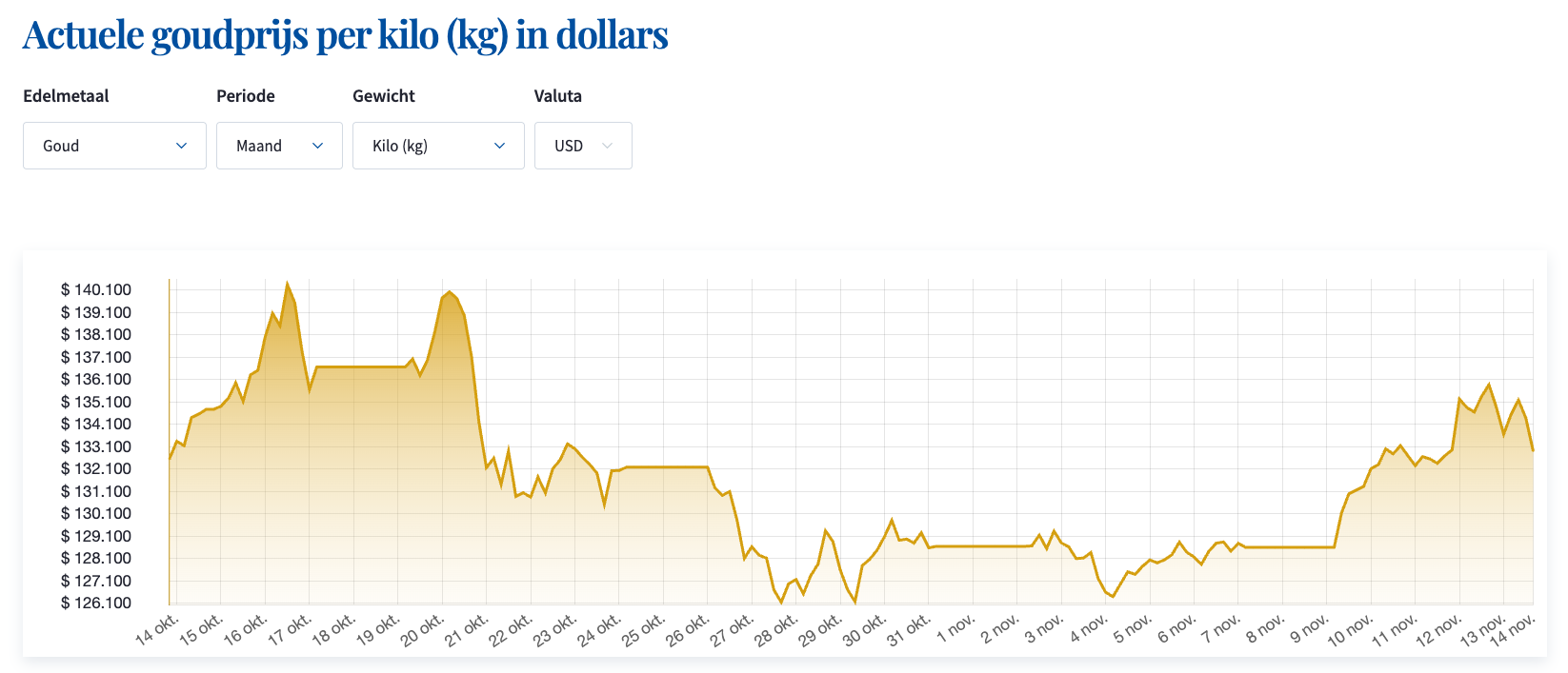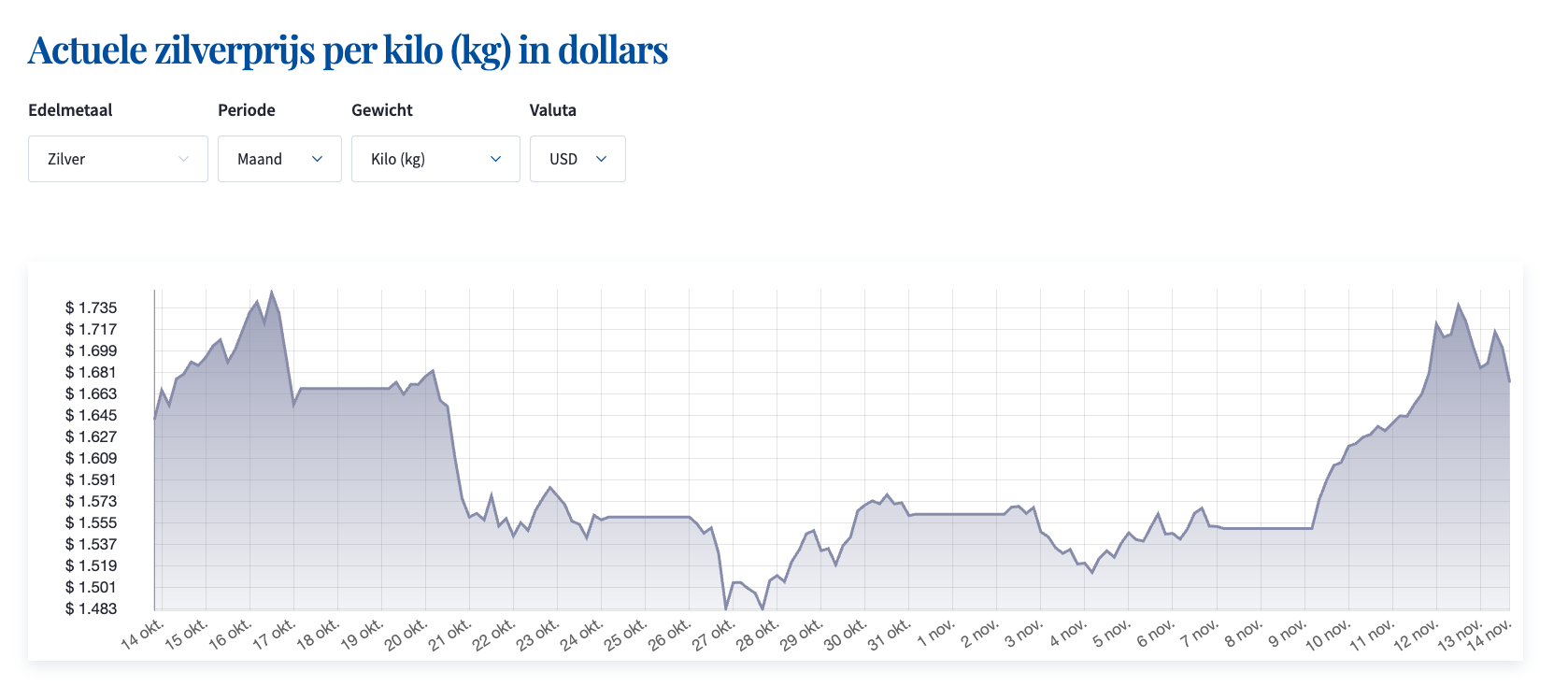9.4
7.721 Reviews

English
EN
The upward price momentum in gold and silver has recovered much faster than expected. Based on the average correction during a gold bull market, prices should have fallen significantly deeper, but that has not yet happened. The gold price lingered between 3,900 and 4,000 dollars for two weeks before moving higher again. Silver also climbed above the psychologically important level of 50 dollars after a three-week pause and is now trading just shy of the peak reached on 17 October.
Even so, caution is warranted because the correction was extremely short in both depth and duration, raising the possibility that the recovery may be temporary. For eurozone gold investors, the decline was further cushioned by the stronger dollar.

Chart: gold price over 1 month, in USD
By mid-November, gold was up 60% in dollars and 43% in euros. Only in 1973, 1974 and 1979 did gold perform better. Silver returned even more: 84% in dollars and 67% in euros. The gold/silver ratio dropped below 80 again; before mid-October this had not happened since the summer of 2024.
The recent price increases are attributed to speculation about a rate cut in December. Earlier, Federal Reserve Chair Jerome Powell indicated that it was far from certain that the policy rate would be lowered on 10 December. The Fed relies on inflation and labor market data, but during the U.S. government shutdown these figures were unavailable.

Chart: silver price over 1 month, in USD
Meanwhile, a temporary agreement between Democrats and Republicans ensures that official government data will begin flowing again.
However, the market did not wait. Several unofficial private-sector labor reports and inflation estimates from commercial banks were already available, consistently pointing to a weakening U.S. economy and labor market. According to the CME FedWatch Tool, about half the market expects a rate cut on 10 December — the third of 2025. Markets currently expect three more cuts next year.
Central bank gold purchases and ETF flows also continue to support the market. According to the World Gold Council, September was the strongest month of 2025 with net purchases of 39 tonnes. Brazil was the largest buyer with 15 tonnes, followed by Kazakhstan (8 tonnes) and Guatemala (6 tonnes). Russia, China, Turkey and Ghana also increased their reserves, while Uzbekistan sold 4 tonnes. After three quarters, Poland remained the top buyer with 67 tonnes.
The global inflow into physical gold ETFs reached 222 tonnes in the third quarter, worth 26 billion dollars. All physical ETFs combined held more than 3,800 tonnes, with the United States contributing the most at 186 tonnes — a 58% increase year-on-year.
One often overlooked demand component is gold-backed stablecoins. Issuers must hold an equivalent amount of physical gold for each token issued. The gold stablecoin Tether Gold (XAUT), issued by Tether Holdings, now has a market value of more than 1.5 billion dollars. In volume terms, Tether holds over 375,000 troy ounces of physical gold as collateral.
